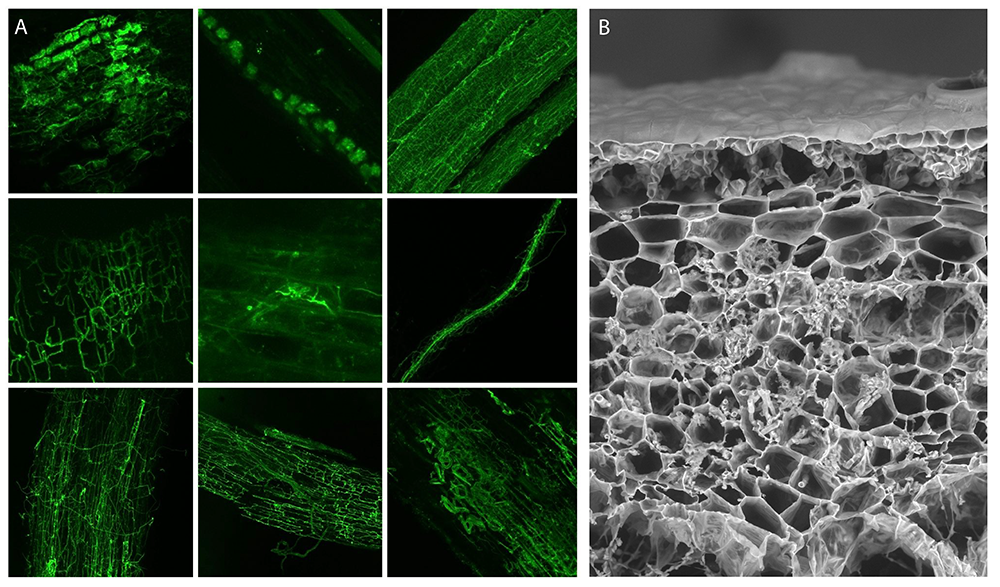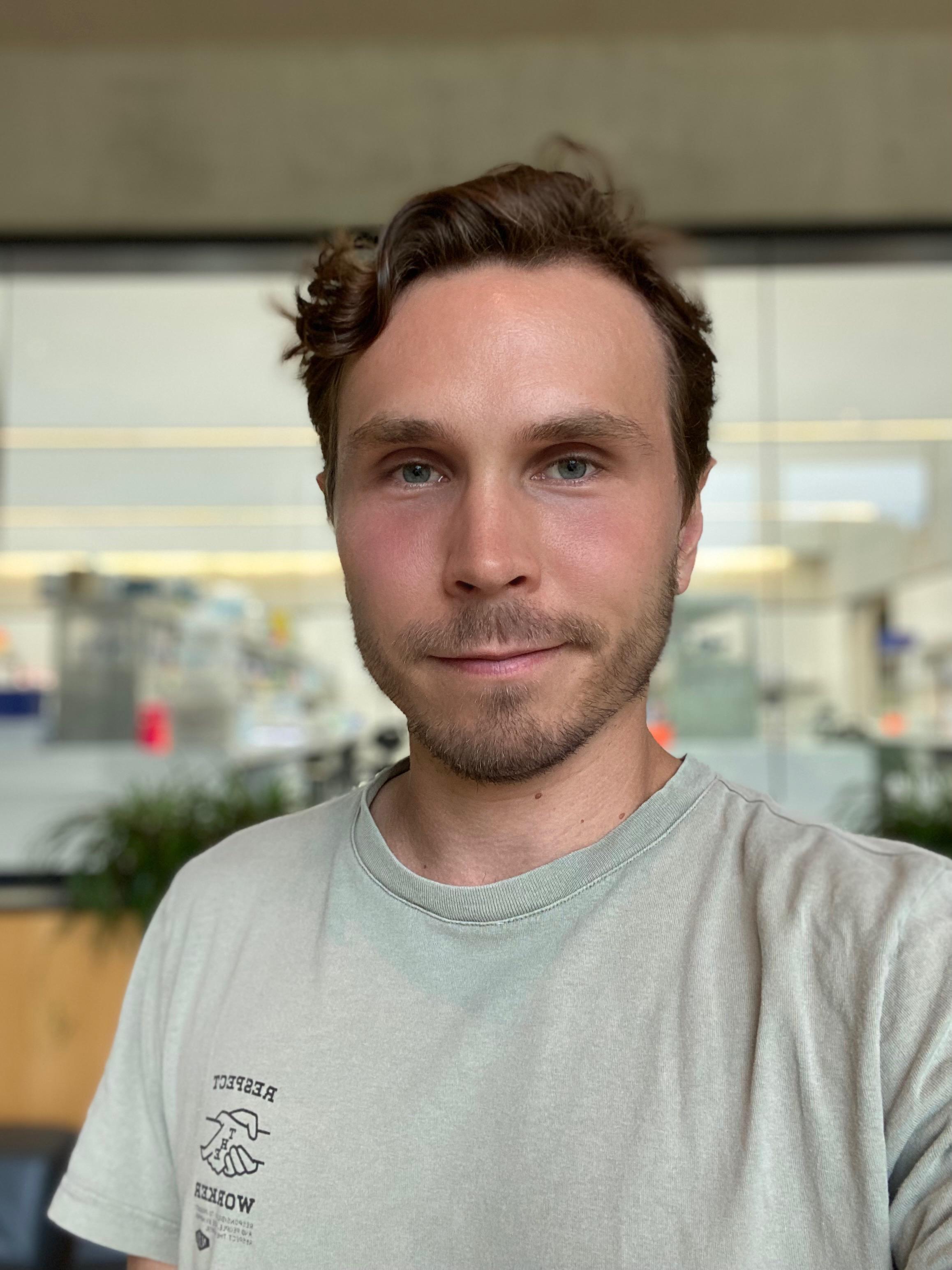I completed my undergraduate studies in Biological Sciences at the University of Münster (Germany) in 2016. During that time, I focused on protein biochemistry in the context of photosynthesis in the unicellular alga Chlamydomonas reinhardtii (Bachelor thesis, supervised by Prof. Michael Hippler) and isoprenoid biosynthesis in Russian dandelion roots (Master thesis, supervised by Prof. Dirk Prüfer; Stolze et al., 2017).
After completing my undergraduate studies, I pursued my PhD at the International Max Planck Research School, working in the group of Prof. Alga Zuccaro (University of Cologne, Germany). During my doctoral studies, I explored the role of fungal cell wall β-glucans in plant-fungal interactions. These glucose-based cell wall polymers constitute the major cell wall component of most plant-colonsing fungi and are critical for trans-kingdom communication (Wanke et al., 2021). I investigated the implications of these cell wall components in plant immunity (Wanke, Rovenich et al., 2020) and fungal accommodation (Chandrasekar, Wanke, Wawra et al., 2022; Wanke et al., 2023).
In January 2021, I joined the group of Dr. Sebastian Schornack at the Sainsbury Laboratory in Cambridge, where I continue to work on different aspects of plant-fungal interactions.
Research Interests
“Fungi are everywhere but they are easy to miss.”
Merlin Sheldrake
(A) In the context of an outreach project in cooperation with Cambridge colleges, Cambridge citizens collected root samples from their gardens and inspected them for interactions with fungi. Each individual sample presented various types of inter- and/or intracellular colonisation. Fungal hyphae stained with chitin-binding fluorescent probe (FITC-WGA, in green). For more information, read this Twitter thread. (B) The liverwort Marchantia paleacea colonised by the mycorrhizal fungus Funneliformis mosseae. Image acquired with Hitachi benchtop electron microscope.
The fossil record documents that the transition of plants from water to land was accompanied by close interactions with different fungi. Today, approximately 90% of all land plants form partnerships with various mycorrhizal fungi. While all of these interactions involve mutualistic carbon-for-nutrient exchange between the host and the fungus, the molecular principles governing reciprocal perception, fungal colonisation of the host tissue, intracellular accommodation, and nutrient transfer vary among different types of mycorrhizas. During my stay at the Sainsbury Laboratory, I am particularly interested in exploring the following research questions:
- What host mechanisms contribute to the compartmentalisation of fungal colonisation to distinct host tissues?
- Does our understanding of mycorrhizal interactions gained from studying arbuscular mycorrhizal fungi also apply to alternative mycorrhizal interactions (e.g. Mucoromycotina Fine Root Endophytes)?
Publications
Wanke, A., van Boerdonk, S., Mahdi, L. K., Wawra, S., Neidert, M., Chandrasekar, B., Saake, P., Saur, I. M. L., Derbyshire, P., Holton, N., Menke, F. L. H., Brands, M., Pauly, M., Acosta, I. F., Zipfel, C., Zuccaro, A. (2023). A GH81-type β-glucan-binding protein facilitates colonization by mutualistic fungi in barley. BioRxiv. https://doi.org/10.1101/2023.04.12.536646. Twitter thread summary.
Teulet, A., Quan, C., Evangelisti, E., Wanke, A., Yang, W., Schornack, S. (2022). A Pathogen Effector FOLD Diversified in Symbiotic Fungi. BioRxiv. https://doi.org/10.1101/2022.12.16.520752. Twitter thread summary.
Chandrasekar, B.*, Wanke, A.*, Wawra, S.*, Saake, P., Mahdi, L., Charura, N., Neidert, M., Poschmann, G., Malisic, M., Thiele, M., Stühler, K., Dama, M., Pauly, M., Zuccaro, A. (2022). Fungi hijack a ubiquitous plant apoplastic endoglucanase to release a ROS scavenging β-glucan decasaccharide to subvert immune responses. The Plant Cell, 34(7), 2765–2784. https://doi.org/10.1093/plcell/koac114. Twitter thread summary.
Vanacore, A., Vitiello, G., Wanke, A., Cavasso, D., Clifton, L. A., Mahdi, L., Campanero-Rhodes, M. A., Solís, D., Wuhrer, M., Nicolardi, S., Molinaro, A., Marchetti, R., Zuccaro, A., Paduano, L., Silipo, A. (2022). Lipopolysaccharide O-antigen molecular and supramolecular modifications of plant root microbiota are pivotal for host recognition. Carbohydrate Polymers, 277, 118839. https://doi.org/10.1016/j.carbpol.2021.118839.
Wanke, A., Malisic, M., Wawra, S., Zuccaro, A. (2021). Unraveling the sugar code: the role of microbial extracellular glycans in plant-microbe interactions. Journal of Experimental Botany, 72(1), 15–35. https://doi.org/10.1093/jxb/eraa414.
Wanke, A.*, Rovenich, H.*, Schwanke, F., Velte, S., Becker, S., Hehemann, J.-H., Wawra, S., Zuccaro, A. (2020). Plant species-specific recognition of long and short β-1,3-linked glucans is mediated by different receptor systems. The Plant Journal, 102(6), 1142–1156. https://doi.org/10.1111/tpj.14688.
Stolze, A., Wanke, A., van Deenen, N., Geyer, R., Prüfer, D., Schulze Gronover, C. (2017). Development of rubber-enriched dandelion varieties by metabolic engineering of the inulin pathway. Plant Biotechnology Journal, 15: 740-753. https://doi.org/10.1111/pbi.12672.
* authors contributed equally to this study


